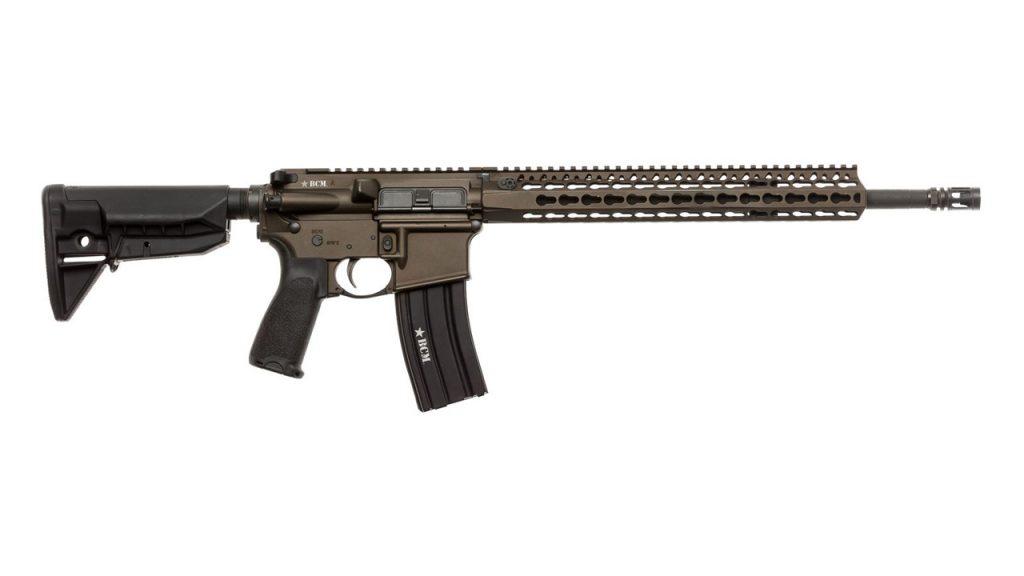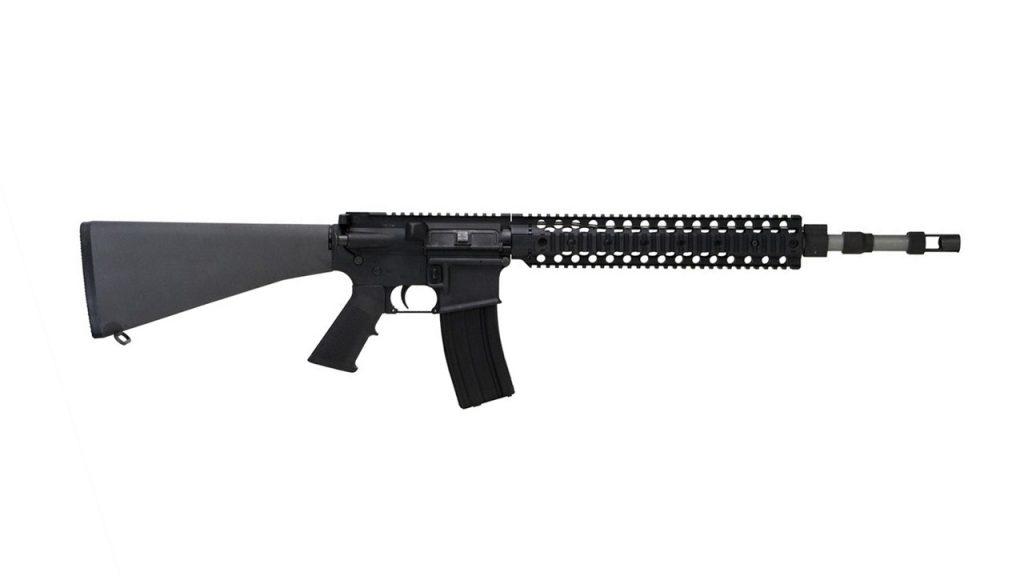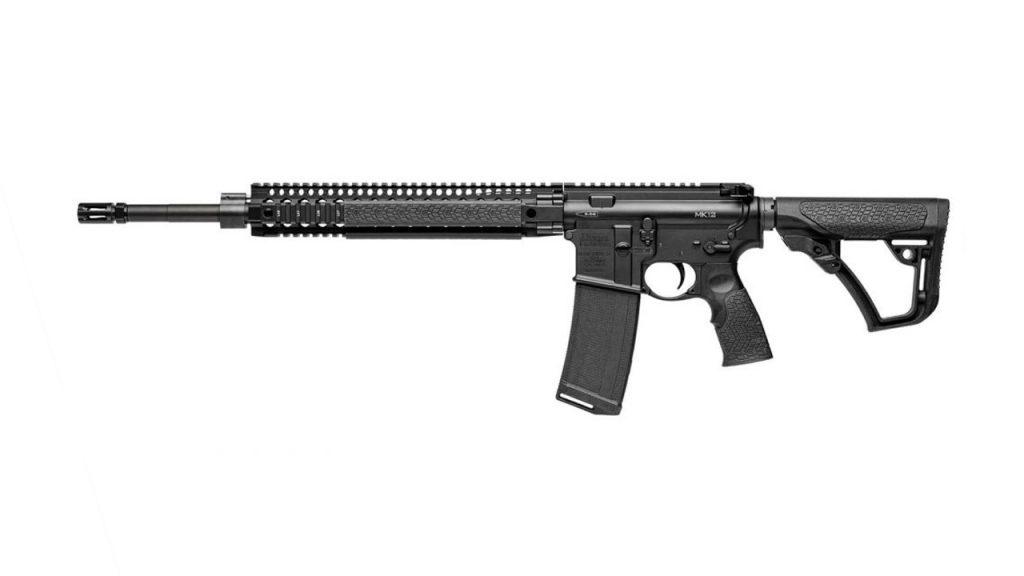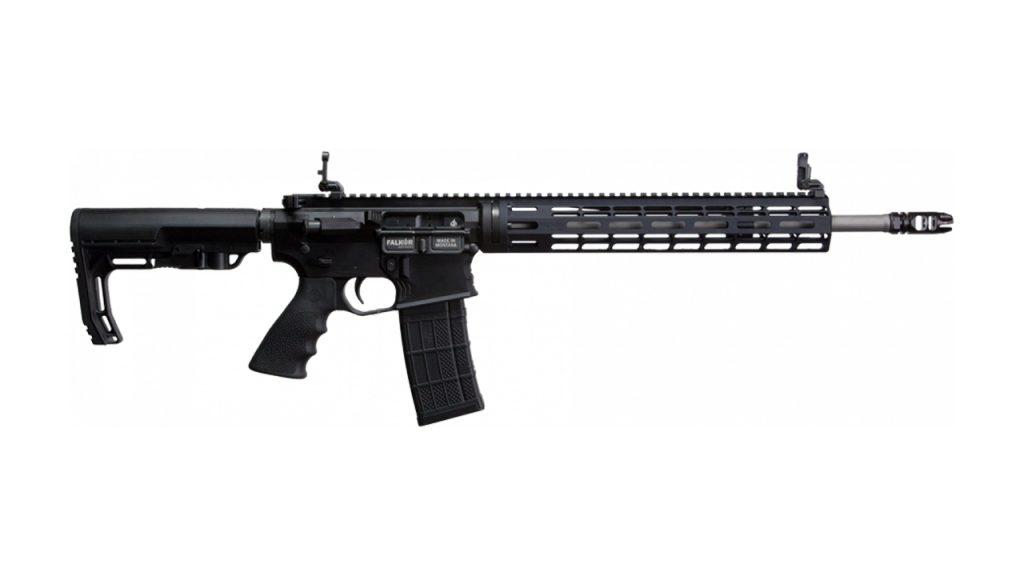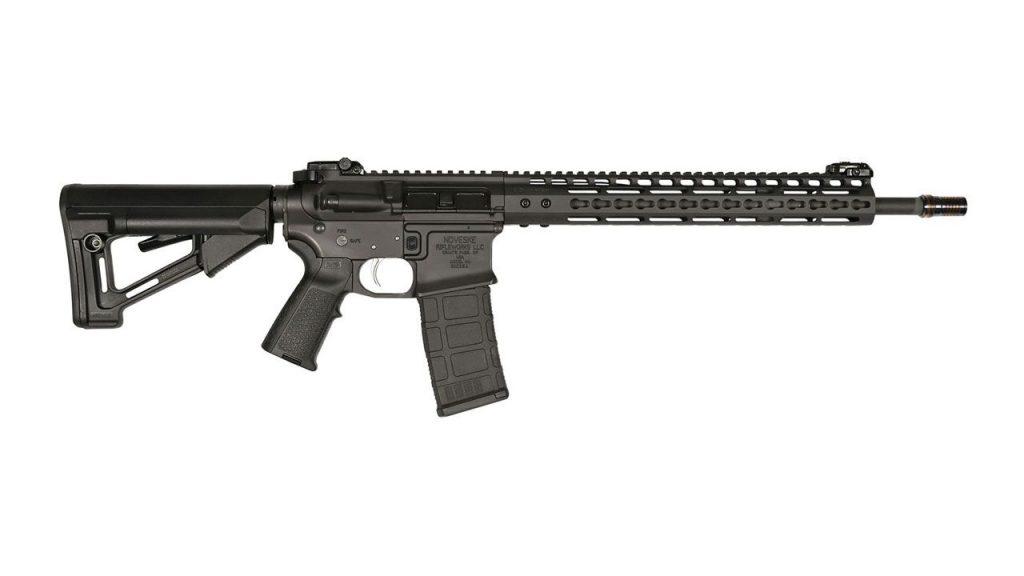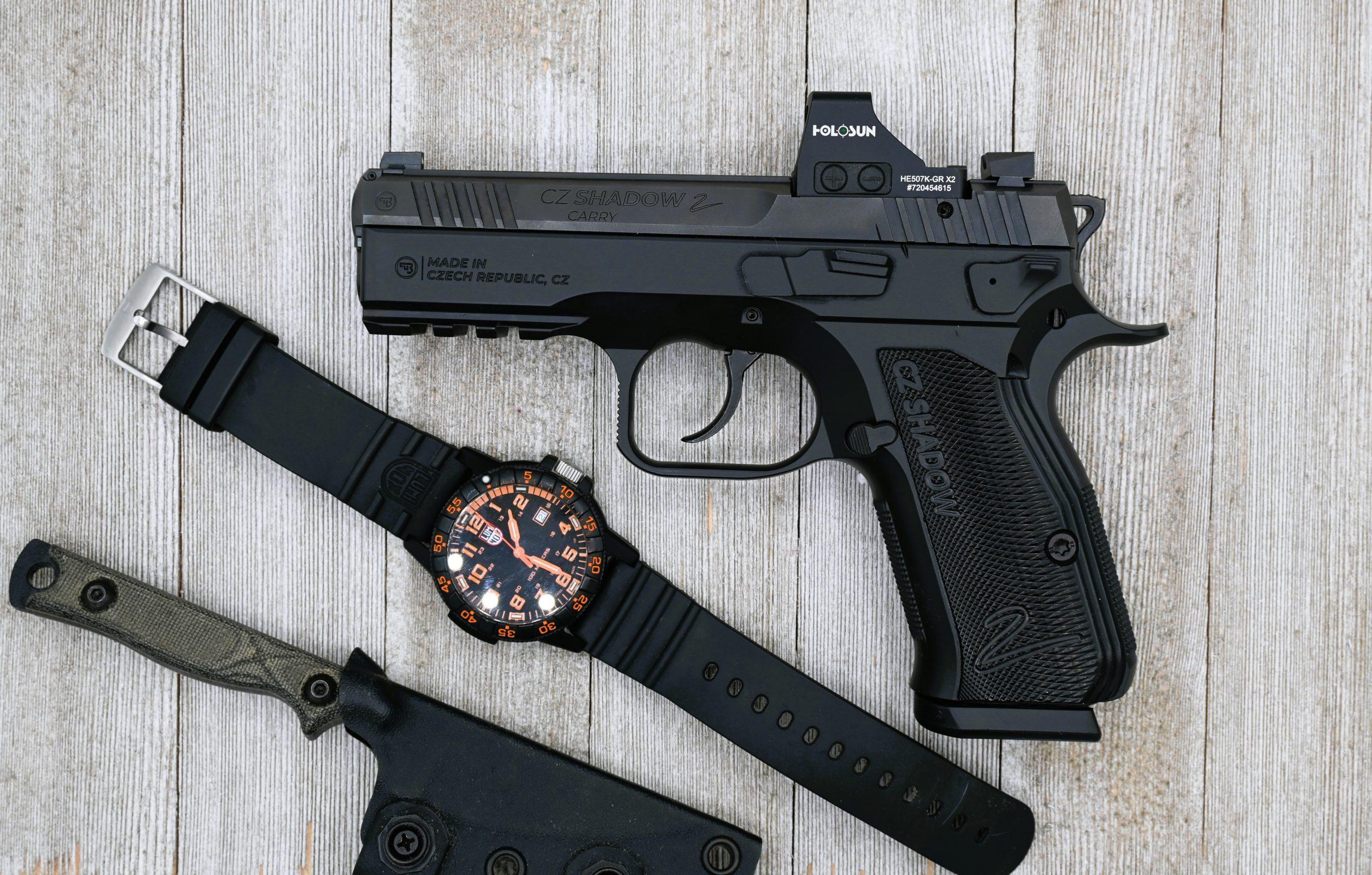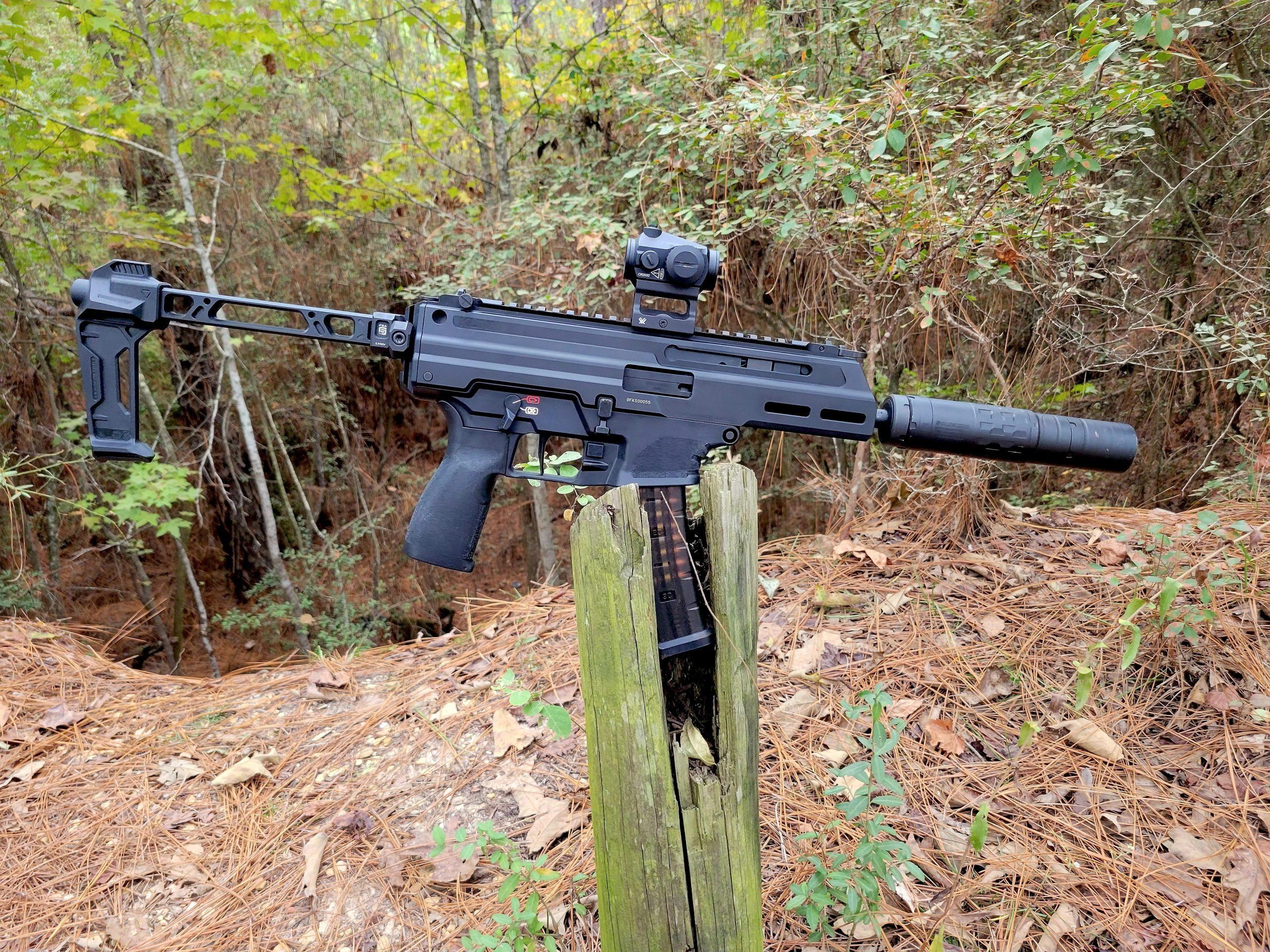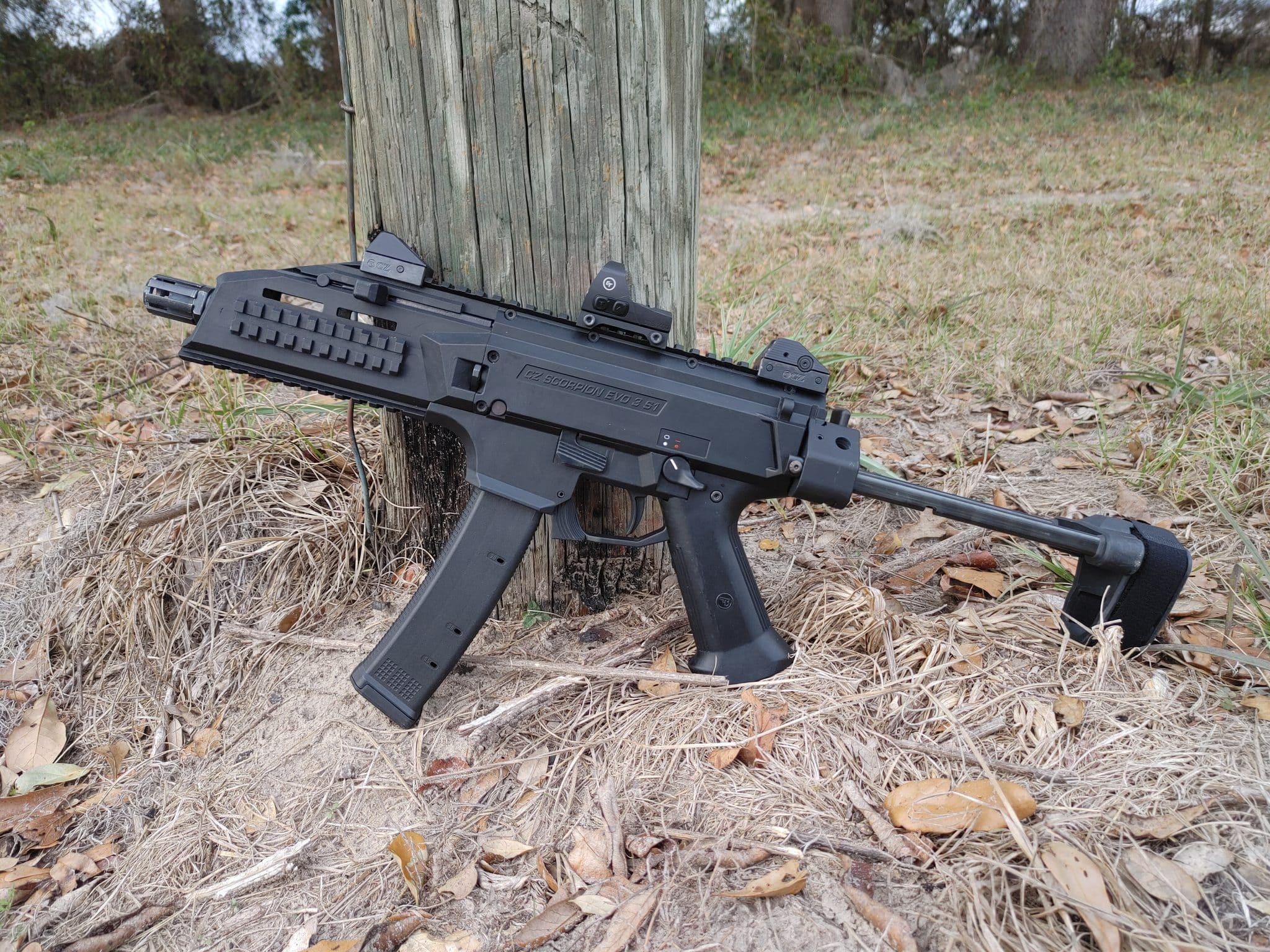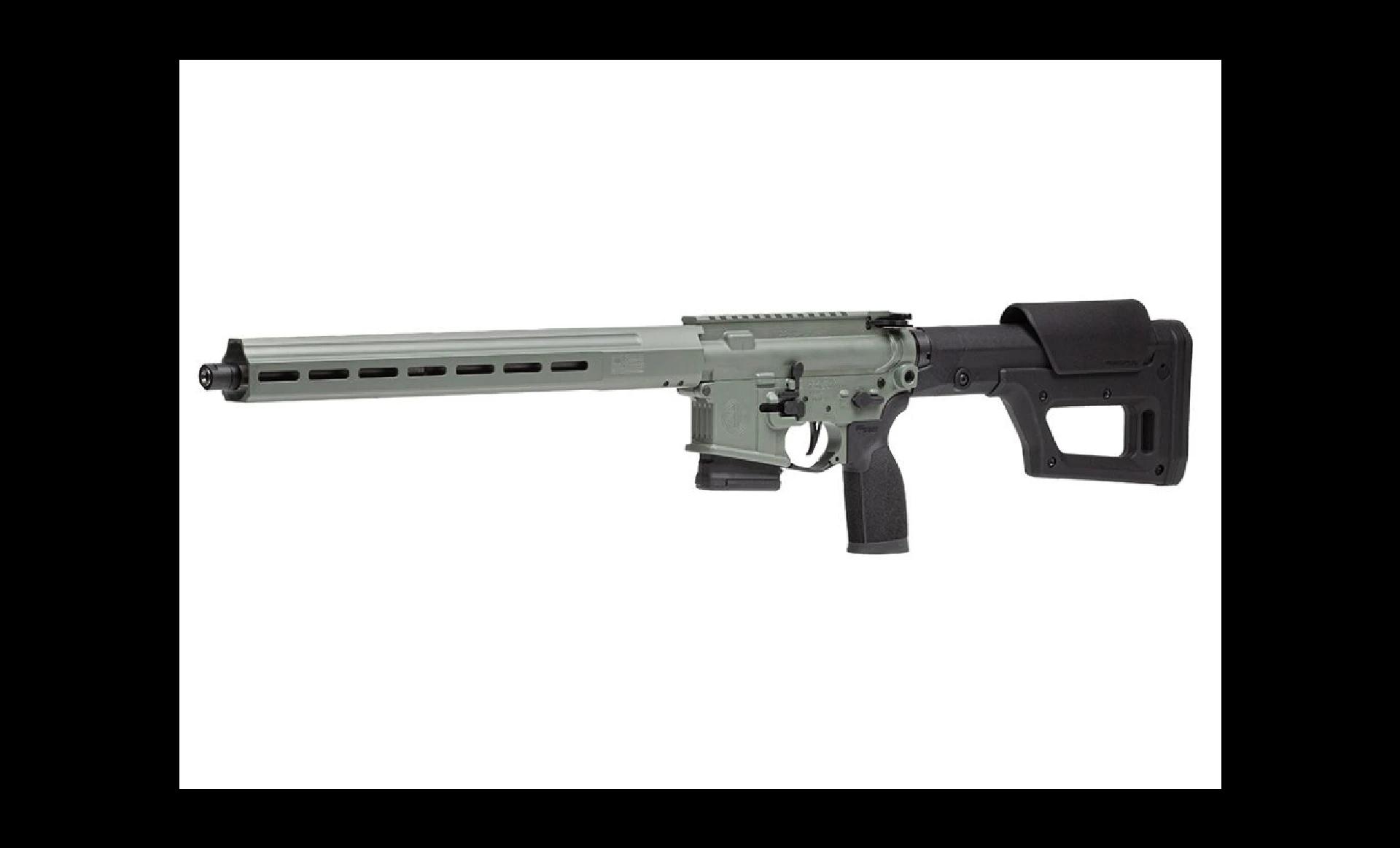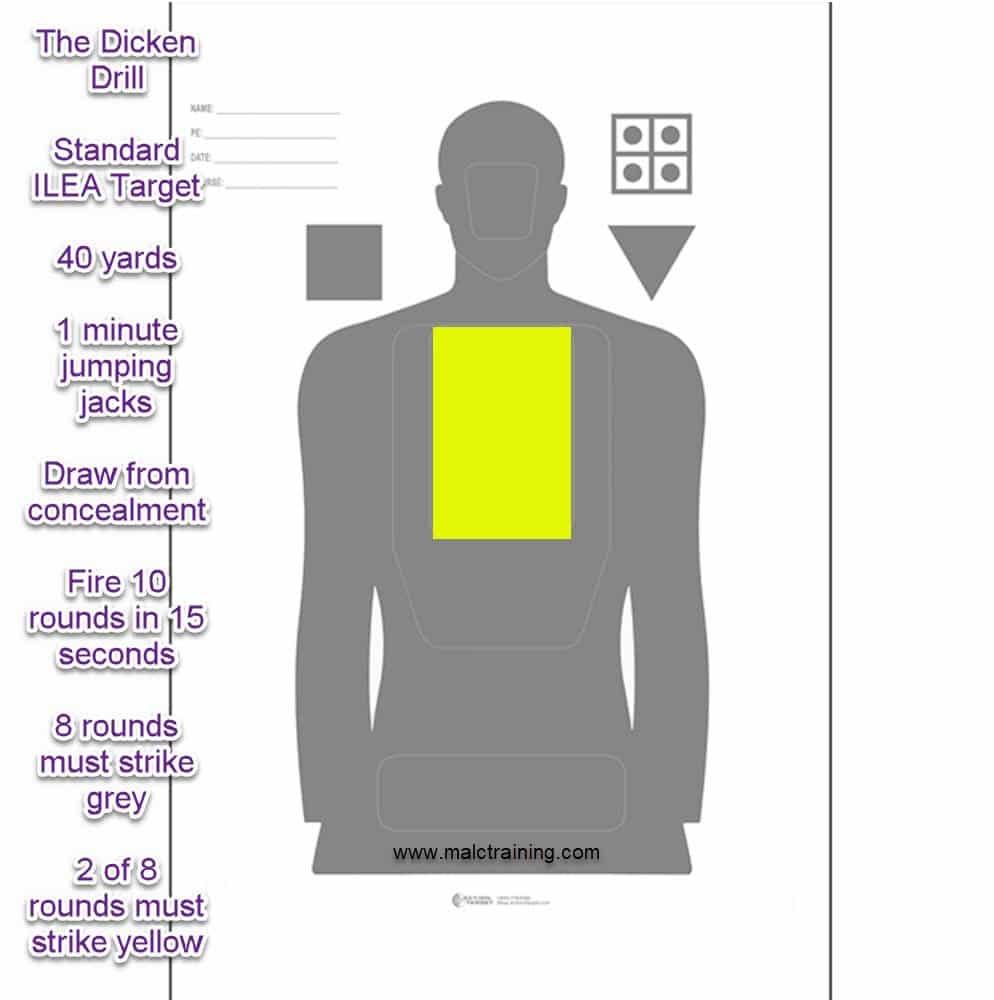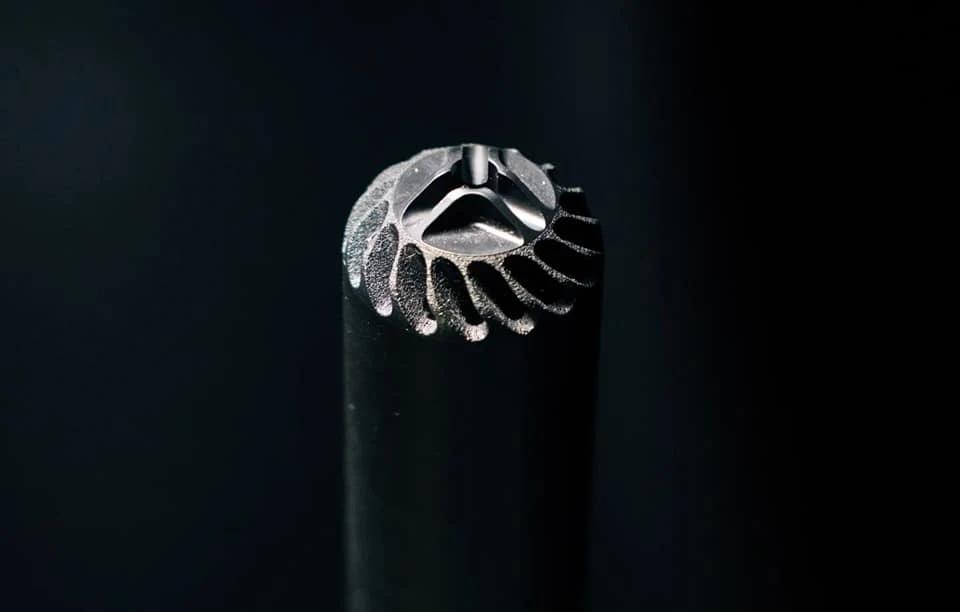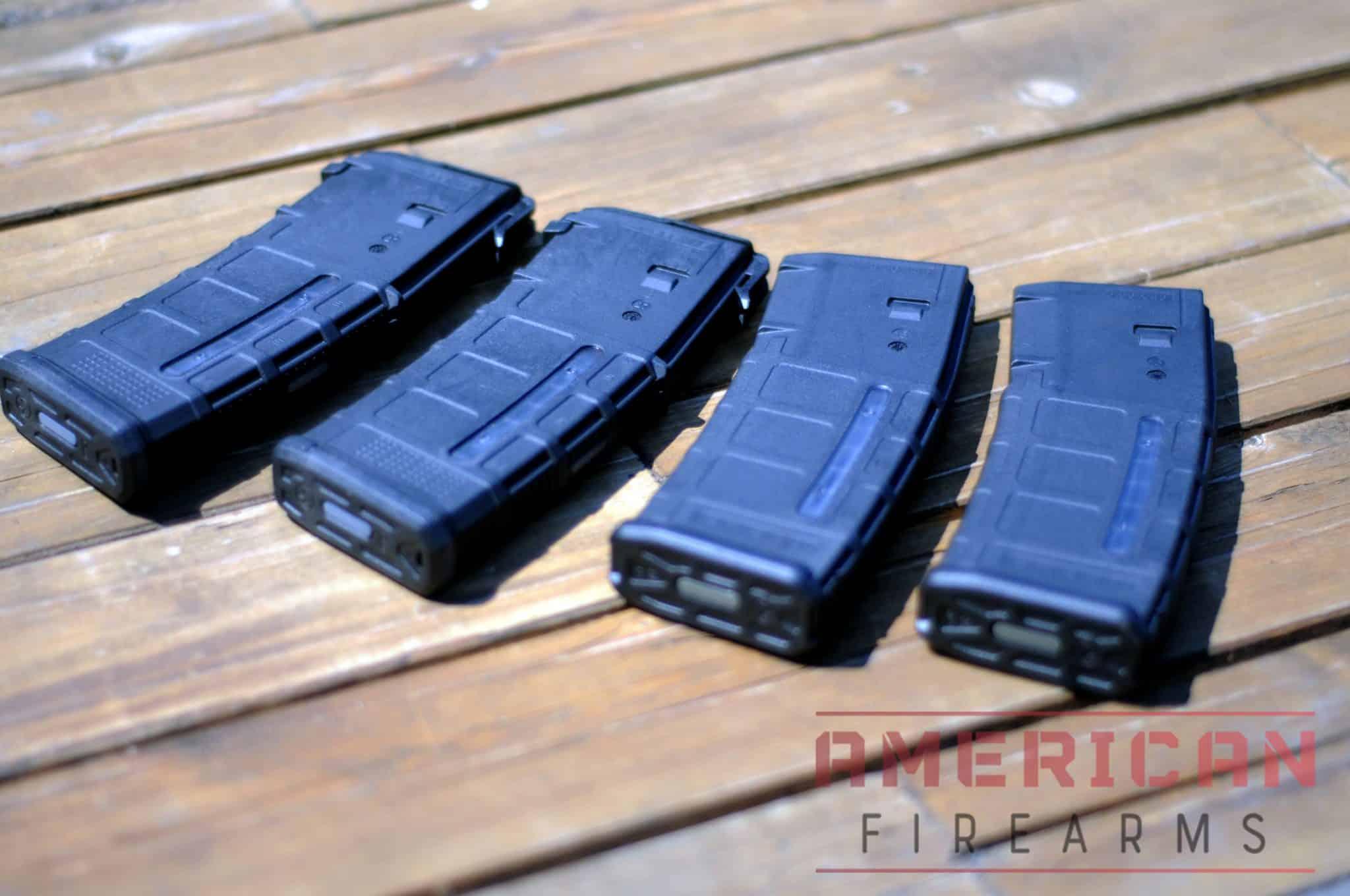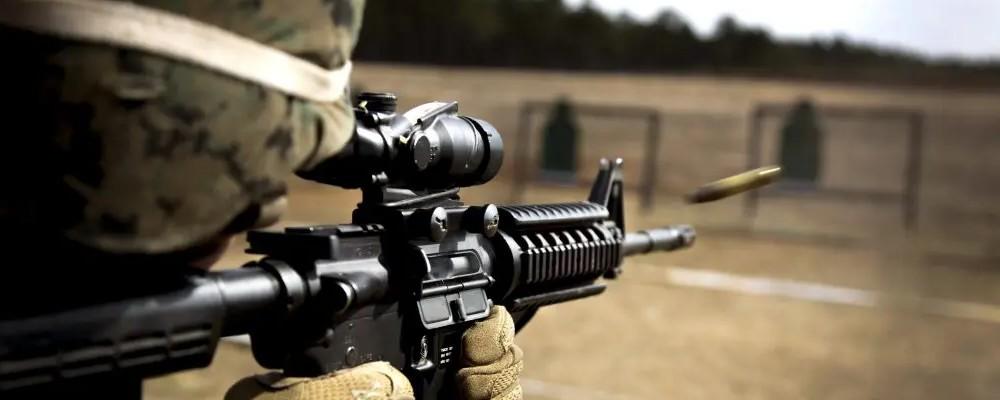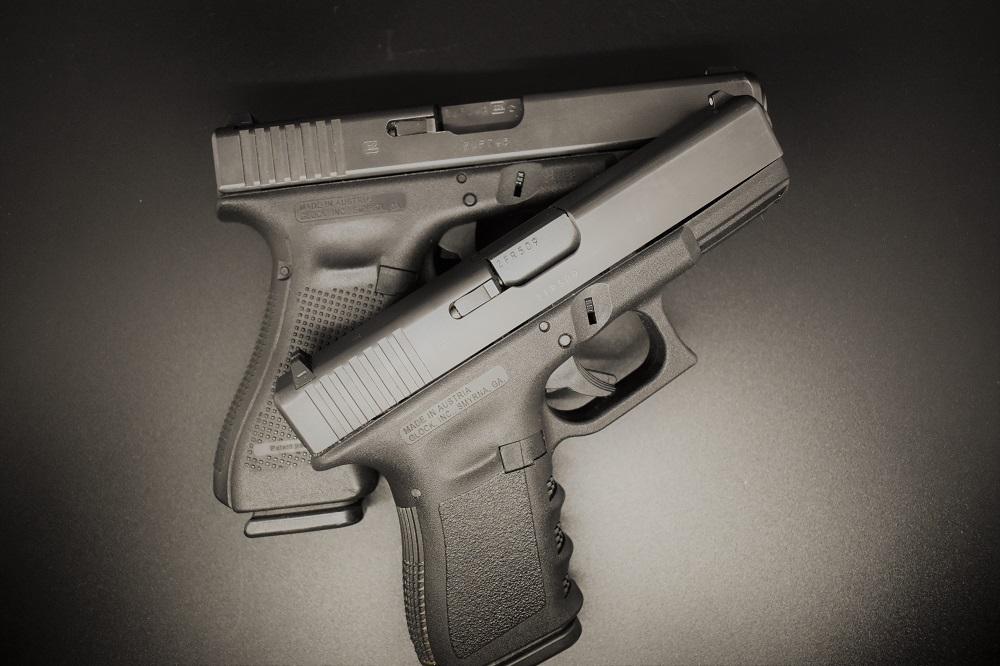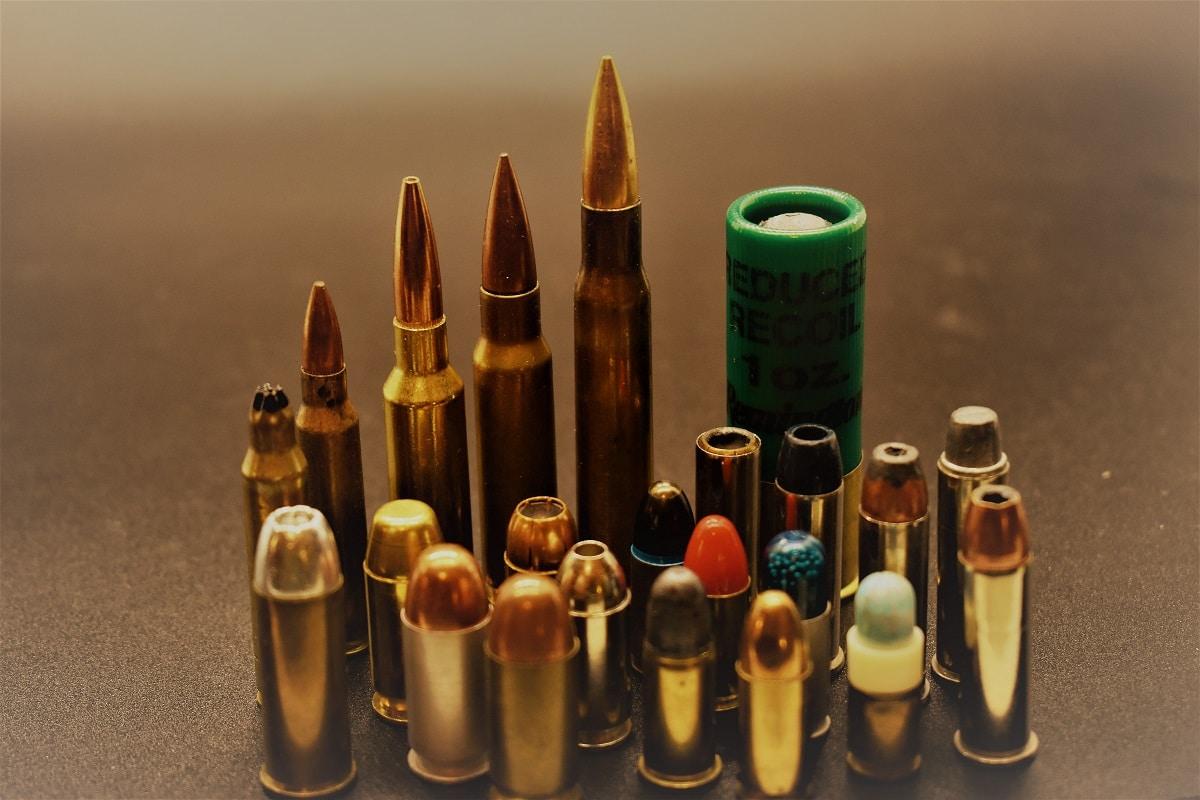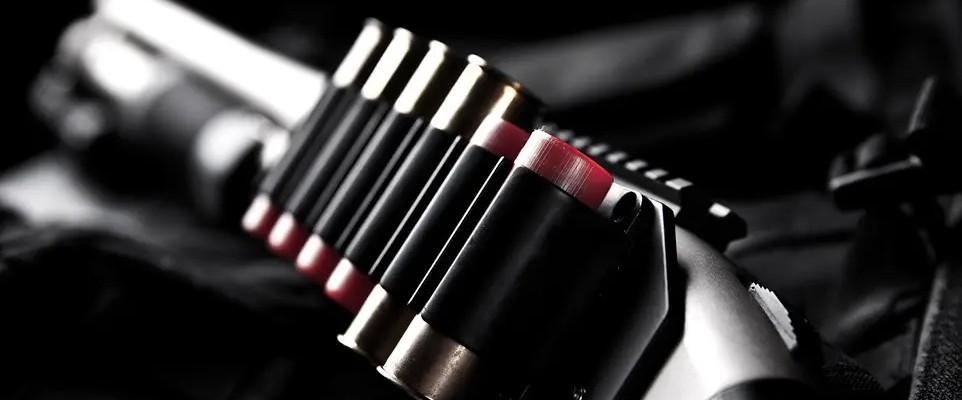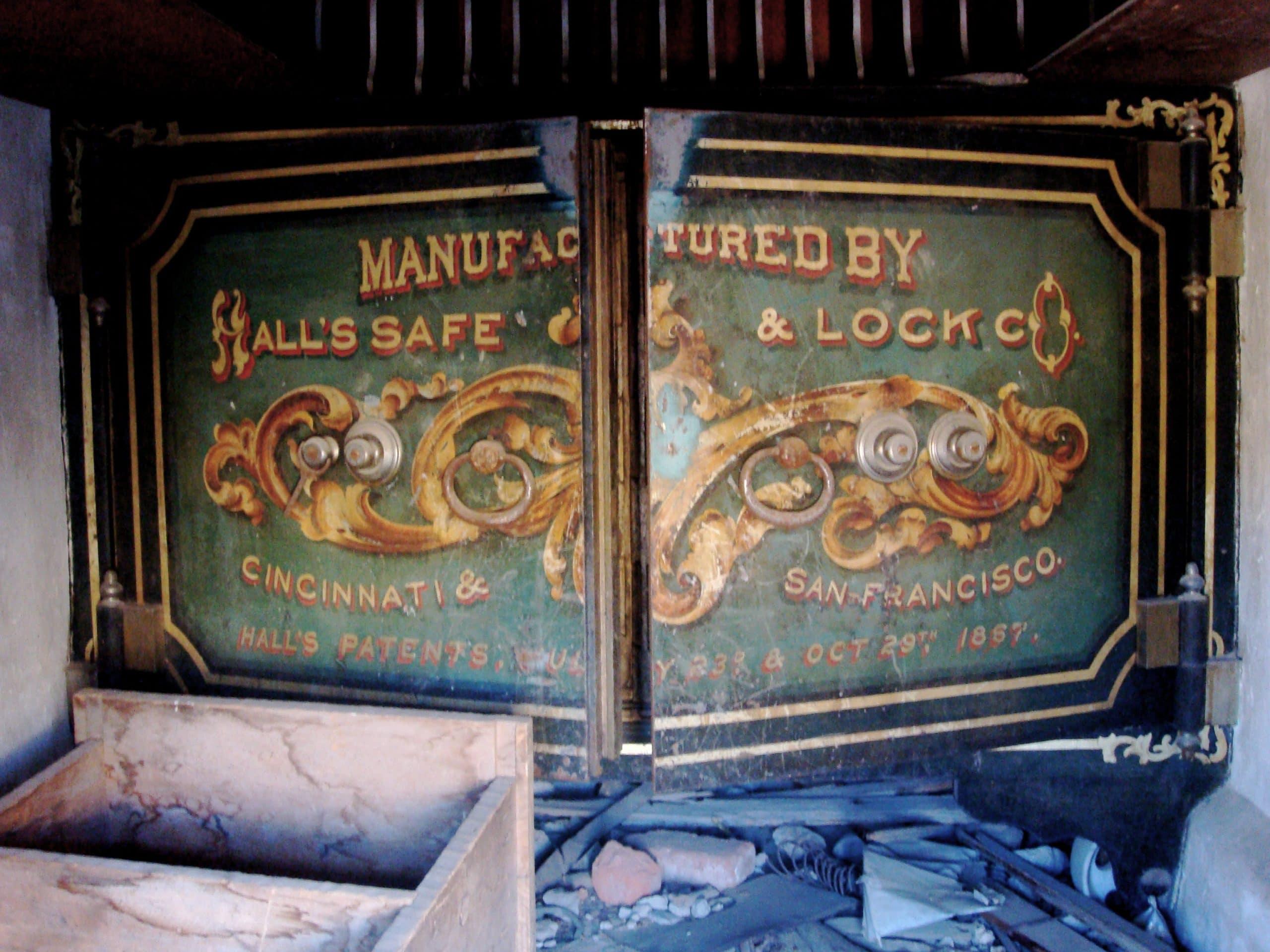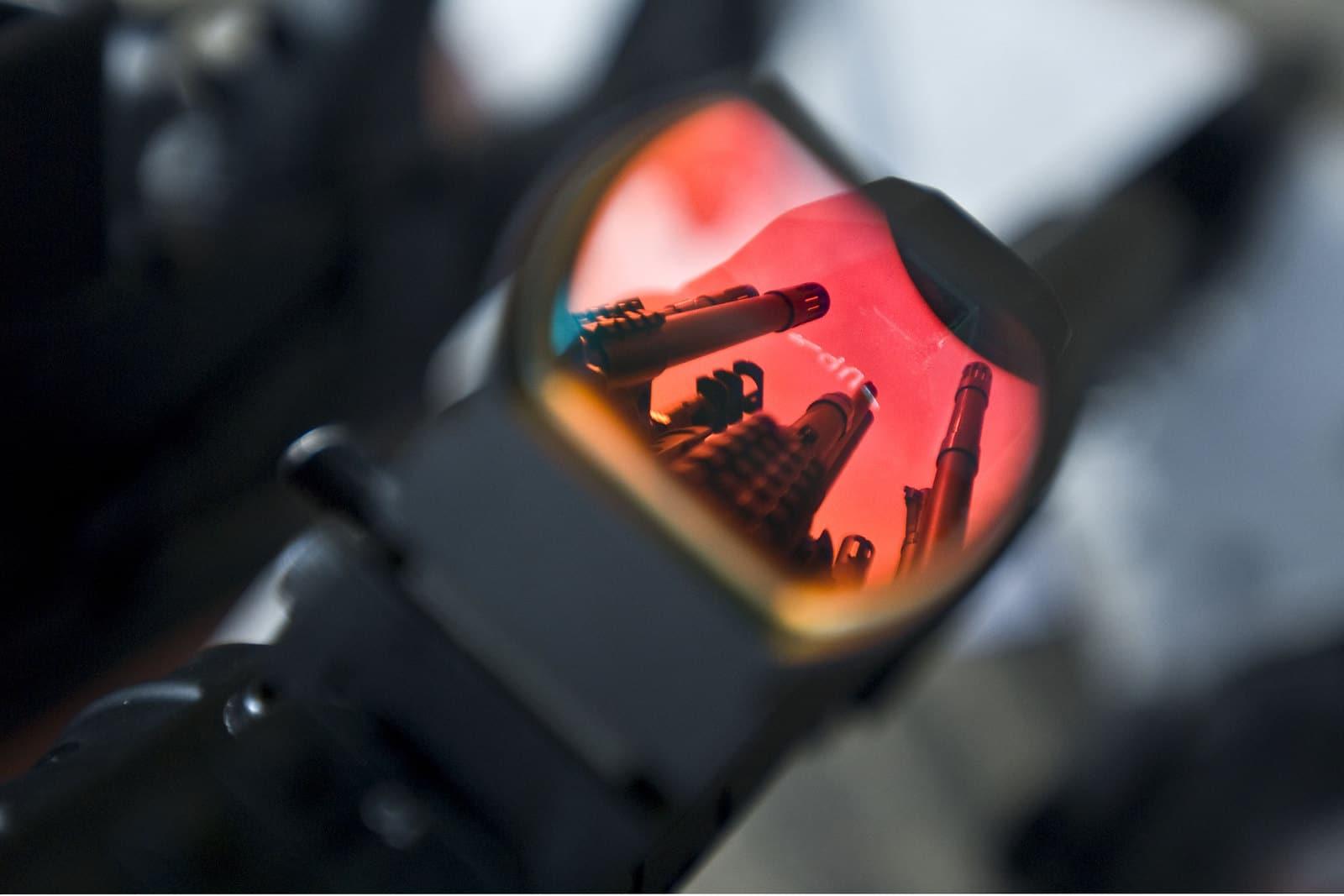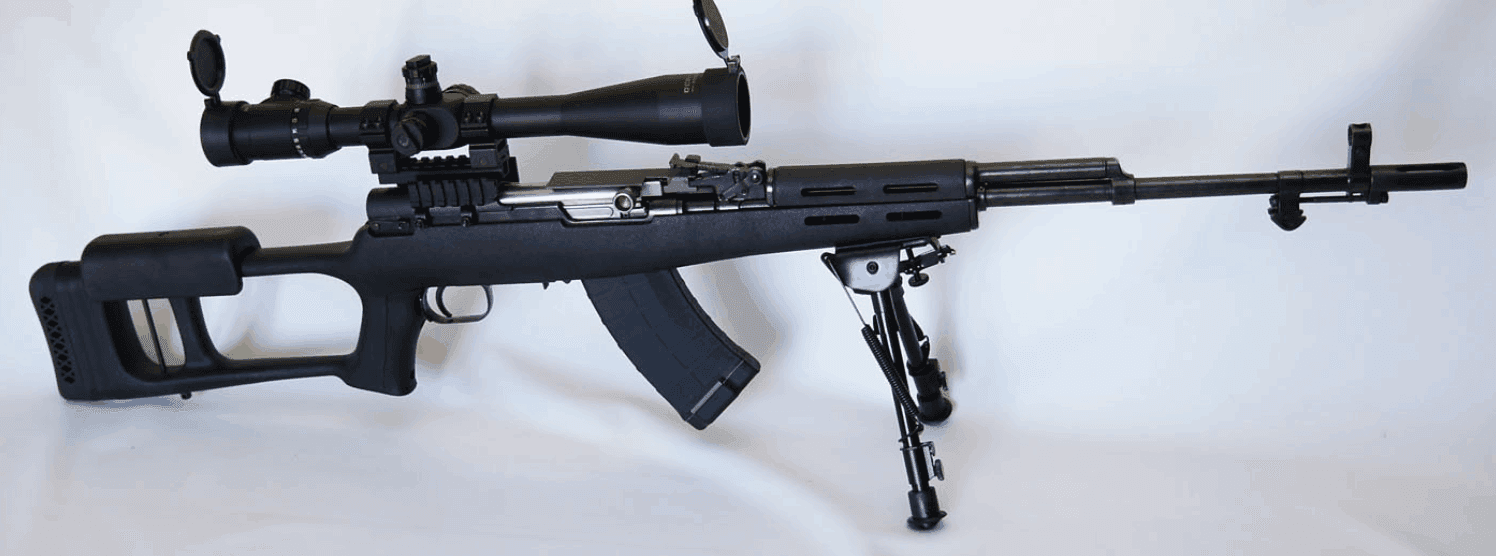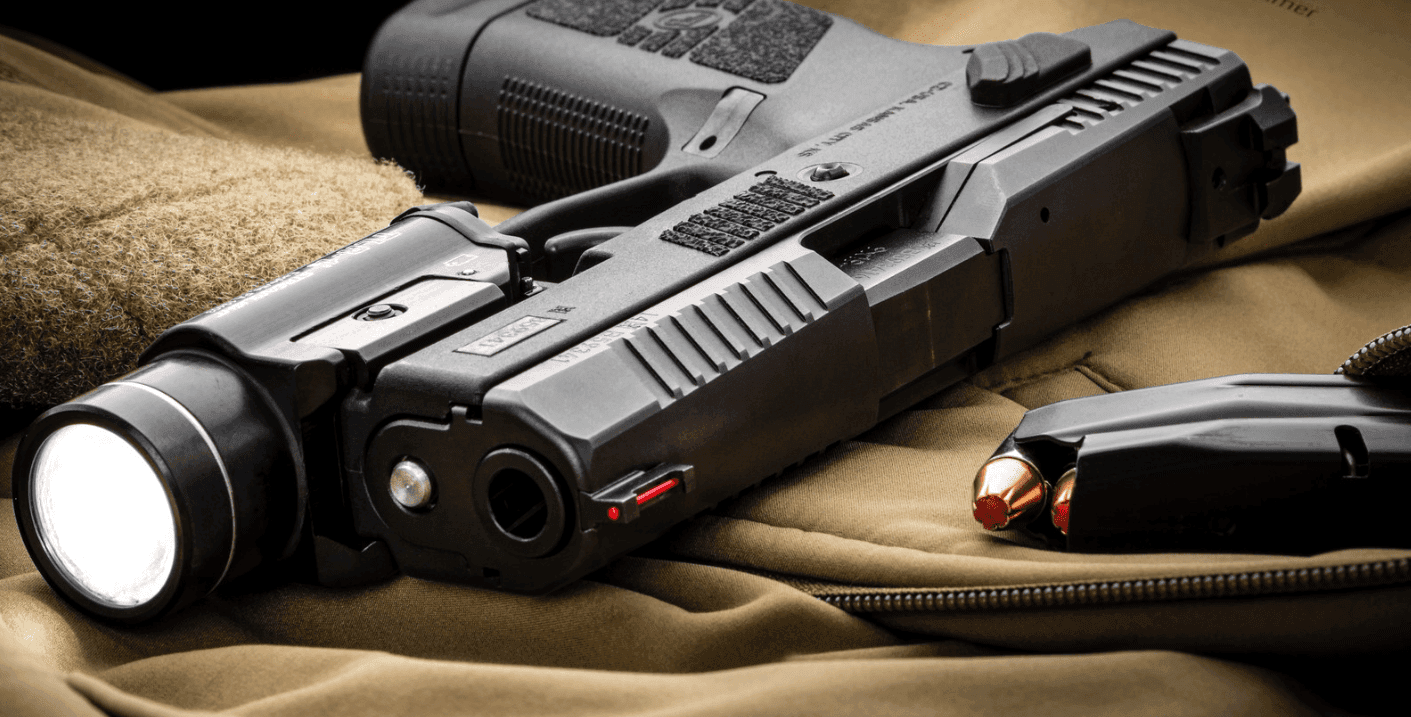Ultimate Guide to A Proper Recce Rifle Setup
Built on the reliable AR platform, the Recce Rifle is a versatile and precise firearm, which has evolved significantly over the years. Initially designed for military and law enforcement applications, it has become a popular choice among civilian shooters as well.
Written By
Michael Crites
Licensed Concealed Carry Holder
Reviewed by
Editorial Team
Learn About The Editorial Team
Share:
Products are selected by our editors. We may earn a commission on purchases from a link. How we select gear.
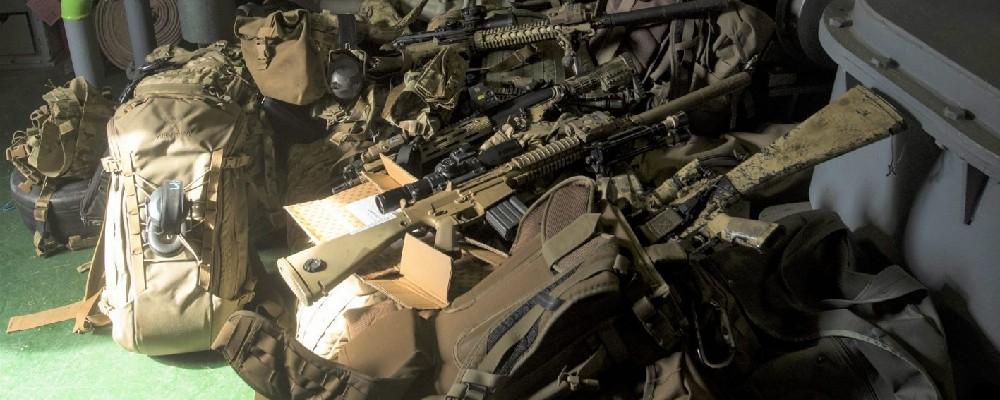
Updated
Sep 2024
This article is part of our Guide to Everything AR.
In general, the Recce (pronounced: “Wreck-E”) Rifle has been something of the Bigfoot or Loch Ness Monster of the AR-15 world for the past quarter-century. However, going past the basic “enhanced carbine” concept — theorized originally by the country’s most elite special operations commandos — the platform has graduated to a fully-evolved class of rifles.
Bringing their own mature sheet of characteristics with them, they offer today’s savvy firearms owner something that goes past the essential AR and on to something more exceptional: a multitool in modern sporting rifle format.
Below is my list of the best RECCE rifles for 2022. I list the best choices in terms of value, performance, design, and cost.
Click on the name to head to the product page, read reviews and check prices or skip ahead to the list of rifles.
In This Article
What is a Recce Rifle?
A Recce Rifle, short for “reconnaissance rifle”, is a versatile and precise firearm designed to excel in both reconnaissance missions and close-quarters combat. The term “Recce” originates from British military slang for “reconnaissance,” drawn from the rifle’s primary role in gathering intelligence and engaging targets at varying distances.
The Recce Rifle concept was born in the early 1990s, thanks to the innovative minds at the Naval Surface Warfare Center Crane Division (Crane), in collaboration with the US Army and SOCOM. The goal was to create a lightweight, accurate, and reliable platform that could serve the unique needs of reconnaissance teams. These teams required a firearm that was easy to carry, capable of close engagements, and yet provided the accuracy and range of a light sniper rifle.
Typically chambered in 5.56 NATO, a Recce Rifle often features a magnified optic, a free-floating rail, and a suppressor or high-efficiency flash suppressor. This combination allows for precision shooting at extended ranges while maintaining the maneuverability needed for close-quarters scenarios.
Over the years, the Recce Rifle concept has evolved, influenced by various military and civilian configurations. Despite these changes, the core requirements remain the same: a compact, accurate, and versatile firearm that can perform in both reconnaissance and close-quarters combat situations.
In modern times, the Recce Rifle has gained popularity in the gun world, becoming a term that signifies a specific set of specifications and parts. However, the true essence of a Recce Rifle lies not just in its components but in the skill of the shooter behind it. Whether built from scratch or purchased as a complete rifle, a Recce Rifle can be a reliable and accurate tool for hunting, target shooting, or self-defense.
A Recce Rifle is a specialized firearm designed to provide a lightweight, accurate, and reliable platform for reconnaissance and close-quarters combat. Its evolution over the years has solidified its place in both military and civilian arsenals, making it a popular choice for those seeking a versatile and effective rifle.
What to look for in a Quality Recce Rifle
1. 5.56 NATO or .223 Wylde Chambering
The fundamental truth of the long-range/short-range Recce rifle is that it excels at both “bad breath” distances and can reach out a little further than standard ARs. With that, the NATO gold standard 5.56×45 is good, with .223 Wylde being just a bit better.
Why Wylde? It allows the user to run larger pills with a better ballistic coefficient– such as 75- and 77-grain loads– while still functioning in the AR’s standard direct gas impingement action.
In this, bullet weight and optimizing the barrel twist rate to wring every bit of velocity are everything. Keep with a 1:7 or 1:8-inch twist on a good barrel with a solid reputation for being accurate.
2. 16 to 18-inch Barrel Length
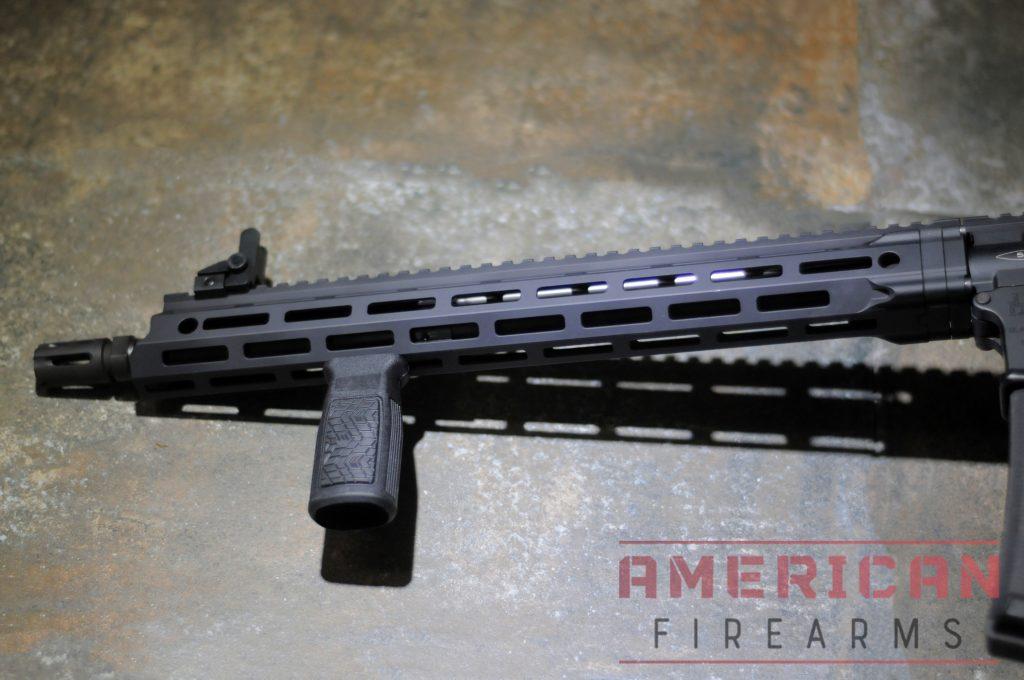
The classic Recce rifle is intended to be as light as possible, enabling the recon rifle to be used for extensive patrolling, yomping, or rucking– situations– where every ounce added to the weight of the rifle and gear feels like a cinder block. Plus, you want to be able to maneuver down hallways and around barricades.
Keeping that in mind, the longest a Recce-style rifle should be is one that uses an 18-inch barrel (preferably 16s). Couple that with a durable but lightweight handguard system and an improved M4 stock, and you should be in the recon rifle sweet spot all day, rarely pushing past 35 inches overall length.
3. Under 9 lbs & Mid-Length Gas System
Weight, with optic, should not grow much past 8-pounds, or else you are getting into DMR territory.
A 16 to 18-inch barrel length, especially with a decent handguard to run interference, enables the user to rely on a mid-length gas system rather than a choppier carbine-length system.
This is ideal as the mid-length generates a smoother recoil impulse as a side effect of the longer dwell time, enabling the user to deliver more rounds on target rapidly.
4. Lightweight Optics
Don’t crowd the rail and run a huge piece of glass on your Recce. This is not a varmint or bench rest rifle. Keeping it low power with an absolute co-witness style of mounting, you will want something in the 1x-4x to 1x-8x magnification range that can be easily put into service at both close ranges (in 1x) and push out a little further when desired.
Today’s Low Power Variable Optic, or LPVO, glass selection has never been better. As a word of endorsement, the guys who are using Recce rifles/M27s/M38s for real on behalf of Uncle Sam have tapped the SIG TangoT6 and the Nightforce ATCR 1-8x for use with their firearms.
The Nightforce NXS 1-4x is right at a pound and very compact while still showing up with a quality sight picture and illuminated reticle when keeping it small.
Even going budget-friendly, a Vortex Strike Eagle 1-6x is a decent second focal plane scope that can be had for around $300. Keep in mind that precision shots at close range, where positive identification is no less critical, are just as crucial as at distance.
5. Steel Backup Iron Sights (BUIS)
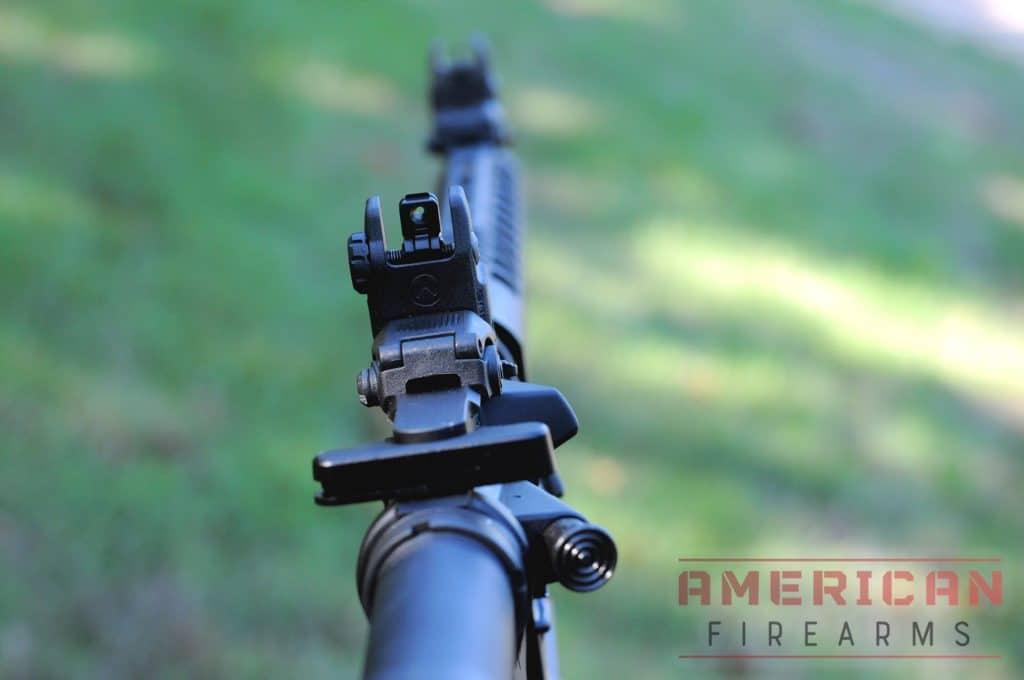
When speaking to optics, things always tend to break or get lost (remember your dummy cord, especially on high-dollar glass, as it can help keep you from having an expensive aluminum stick in the field). Good backup iron sights are a must, with plastic Magpuls not considered to be good enough.
Go with Magpul’s Pro Steel series, LWRCs, Troy’s Micro HKs, or Folding Battles, or, if your optics accommodate it, the Daniel Defense A1.5 fixed series.
6. Purpose
A Recce rifle is genuinely a “do-anything” style of AR that is at home hunting medium game in the field, running and gunning on a 3-gun competition course, for carrying while on an over-the-horizon patrol, responding to an active shooter, or securing the perimeter in the zombie apocalypse.
Building your own recce rifle allows for a versatile platform suited for various combat scenarios, emphasizing reliability and lightweight features.
Keep to the mantra of being compact (no longer than an 18-inch barrel, no outsized PRS-style stocks), high-quality (good trigger– LaRue Tactical’s MBT-2S is only $80—optics, and upper), and rugged (no Wish.com/eBay mounts or questionable accessories) then the 500-yard sweet spot with a 5.56-fed AR is well within grasp. Of course, a reliable weapon light is essential for effective engagement in various lighting conditions, particularly in military and tactical scenarios.
Build your own
The recipe isn’t tough to come up with the ultimate lightweight rifle for a Recce Rifle setup. This means that rolling your own Recce is a real thing these days. This ranges from out-and-out clone build for the guys who like to have what the frogmen have, or as close to it to a more vanilla build that still hits the high notes.
Long story short, if you want to build your own perfect take on the Recce concept, do your homework and construct your rifle, then (and this is the hard part these days) find the ideal load that likes your build and works with it both at 25M and 500M.
So, what is a RECCE rifle again? (TLDR version)
In general, a RECCE rifle has the following characteristics:
- Chambered in 5.56×45 or .223 Wylde
- 16 to 18-inch barrel Government Profile barrel
- 1:7 or 1:8-inch twist
- Lightweight 1x-4x to 1x-8x optic
- Steel BUIS
- Under 9 lbs with glass
Recce Rifle Goodness
1. Most Options: BCM Recce-16
Bravo Company Manufacturing (BCM) has been striving to corner the market on commercially available off-the-shelf lightweight and accurate Recce Rifles, currently marketing no less than nine models labeled as such.
All BCM Recce-16s feature 16-inch barrels with either a 1:7 or 1:8 twist rate, have a full-length top Pic rail, use a mid-length gas system, weigh in along the 5.8- 6.5-pound range, and come standard with BCM Gunfighter series furniture and handguards.
2. Centurion MK12
Centurion Arms has the “Crane Spec Mod 1” variant of the MK12, which includes a 1:7 twist, 18-inch stainless barrel with a 12-inch quad-rail handguard, and fixed A2 style buttstock.
Offered with either KAC or PRI iron sights on the Pic rail, the MK 12 comes standard with Centurion’s 2-Stage Advanced Sniper Trigger (AST), although you can opt for a KAC for that as well.
While a skosh on the heavy end of the Recce rifle spectrum, the rifle is as close as you can get to a “fresh from the armory” MK12. For those just looking to upgrade their own lower, Centurion also sells a complete MK12 upper receiver.
3. Daniel Defense MK12
Using a gas block built to Crane’s original specs for USSOCOM, along with an 18-inch stainless steel cold-hammer forges barrel and 12-inch free-floating Picatinny quad rail, Daniel Defense has a regular MK12 clone that still runs 7~ pounds and will fit inside a 35-inch box.
Shipping with a their Mil-Spec CNC machined upper from 7075-T6 aluminum, and a Geissele SSA 2-stage trigger already installed, the only gear you’re missing is a bipod and the right optic to be very, very close to a top-notch Recce rifle.
4. Falkor Recce 16
Falkor Defense has trended a bit more towards precision that maneuvers on their Recce 16 series, using a 16-inch PROOF stainless steel 1:8 twist barrel with a longer than typical 14.6-inch MLOK free floated handguard.
The trigger is one of Geissele’s 3.5-pound Super Dynamic 3-Gun models, while the BCG is nitrided. All this rides on billet receivers with ambi mirrored surface controls making it southpaw friendly. Still, the carbine shrinks down to 33.5-inches overall with the collapsible Misson First minimalist buttstock, and the whole thing is under 6.6 pounds.
5. Noveske Light Recce
Built around a 1:7 twist 16-inch chrome-lined barrel made from the M249 machine gun barrel steel with a heavy chrome lining, the Noveske Light Recce model uses its own in-house 11-inch free-float handguard rail system and a Magpul STR stock.
Weight is just over 7-pounds, and for those looking to drop a little bit more of that, Noveske also sells a 14.5 Recce rifle made with the same M249 steel that reaches non-NFA length with a pinned and welded muzzle device.
History of the Recce Rifle
The exact origin of the “Recon” (or “Recce Rifle” as the Brits say) is, as with all gun culture, slightly vague. What is known is that the original RECCE rifle concept came from the U.S. Navy’s Special Warfare community: namely the SEALs and their supporting military team armorers.
The gun was developed as a jack of all trades to bridge the gap between the standard frogman small arms of the 1990s (the M4 Carbine/M16A2 Rifle in 5.56 NATO with iron sights or primitive red dots that were good for about 300 yards, or the even shorter-ranged Hecker & Koch MP5 9mm submachine gun) and a favorite of SEAL snipers — the accurized M14 rifle in 7.62 NATO.
Early recce rifles were the initial adaptations and modifications made to these standard military firearms, incorporating high-quality optics and match-grade barrels to enhance their versatility and precision for reconnaissance missions.
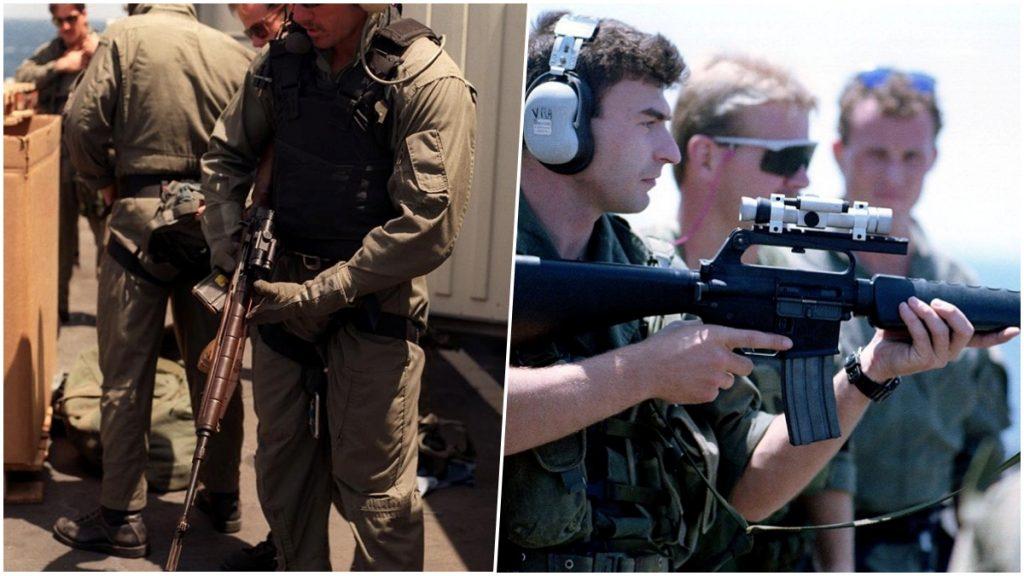
In short, what the military needed was a carbine-sized weapon that could clock-in shooting accurate shots in the hands of a skilled marksman out to 400-500 yards or so, and still be highly maneuverable to provide greater lethality in the style of closed-quarters battle in tight areas familiar to commando-type military units: raiding buildings, boarding and securing ships at sea, and fighting in complex urban areas such as alleyways and sewers.
This meant that, despite the tendency to go for a 20- or 24-inch heavy-barrel, such as seen on DCM competition rifles, the gun still had to be “recon” or “recce” friendly insomuch as the operator was to deploy it after fast-roping or helo-casting out of a low-flying chopper at Zero-Dark-Thirty, or inserted via a small boat, parachute or military submarine.
So, in the end — when it comes to the SEAL recon rifle — the shorter the barrel, the better.
As described by Navy SEAL Kyle Defoor, as far back as 2010:
“The original, whatever you want to call them- Recces, SPRs, MK 12s (we usually just say ‘sniper M4’) had a 16-inch barrel, Leupold 2.5-10, and a PRI foregrip. They were first used operationally in ’93 in Somalia by our guys that were attached to our Southern brethren.”
Since then, the Recce rifle concept has been continually developed over the past 30 years, with the Navy ordering small batches of aftermarket barrels and match-grade parts to update their rifles in-house.
Originally the rifles were built by the armorers of the secretive Naval Surface Warfare Center’s Crane Division (or NSWC Crane) in Indiana under small contracts (less than$7.5 million each to fly under the DOD’s daily media reporting threshold), and these Crane RECCEs have been taken out over time — replaced with Colt and Lewis Machine & Tool (LMT) for stocks; Douglas, Knights Armament and Lija for barrels– later optimized for the new Mk 262 cartridge, which uses a heavier 77-grain bullet; ALG, Daniel Defense, LaRue Tactical and LWRC for handguards and rails; Troy for backup irons, Geissele or KAC triggers; and Leupold, Nightforce and Trijicon for optics.
All this was developed on stock select-fire M-16A1 lowers, of which the Navy had thousands on hand, with some dating back to the 1960s.
The basic rifle remained the same: a light but accurate barrel in the 14.5-to-18-inch range, a free-floating handguard, quality trigger, a flattop upper receiver with a Pic rail system for a low-power optic, a practical combat sling, and a lightweight folding bipod. Ideally, they are capable of 400 yards or more with basic issue ammo and a 30-round STANAG magazine.
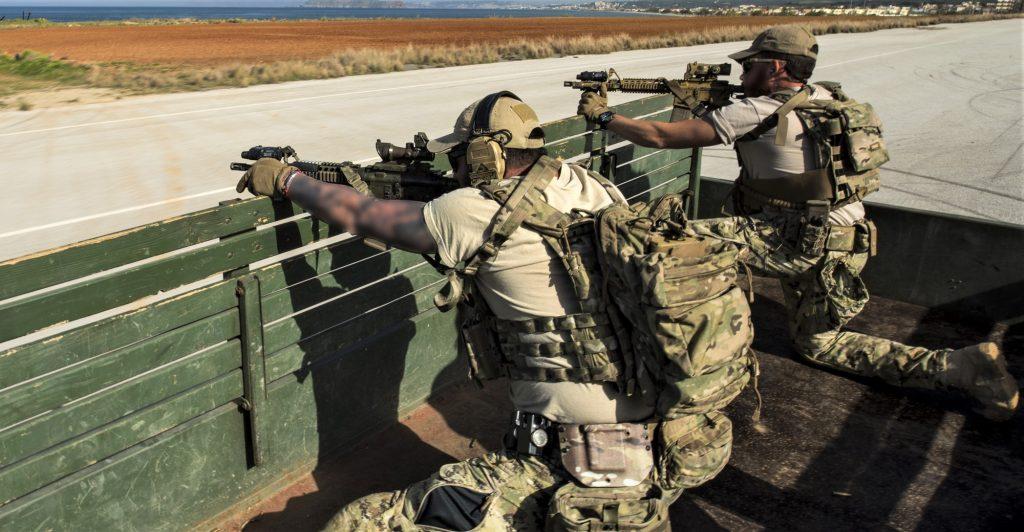
Around 2007, a more dedicated variant of the “sniper M4” or Recce was type designated the Mark 12 Mod 0/1 Special Purpose Rifle (SPR).
Using a match-grade free-floating 18-inch heavy stainless barrel with a 1:7 twist to stabilize the 77-grain M262 cartridge, the rifle was heavy, pushing 12-pounds with an optic, while running over 42-inches long, making them a bit unfriendly for CQB and tilted more toward snipers than rangers.
While shooting out to 600 yards — which is not a problem for AR platforms in 5.56 provided they use the right ammo and barrel, they proved a bit unsatisfactory when the Navy could just pick up a dedicated 7.62 NATO caliber platform, such as the FN SCAR Heavy 17 or 20 (Mk 17 or Mk 20 SSR) or KAC M110 SASS for nearly the same weight and shooting better terminal performance.
With that, Mk 12 use within the SEAL teams quickly faded away within a decade, pushed out to Marine infantry squads for use as DMRs for a while, but the Recce endures.
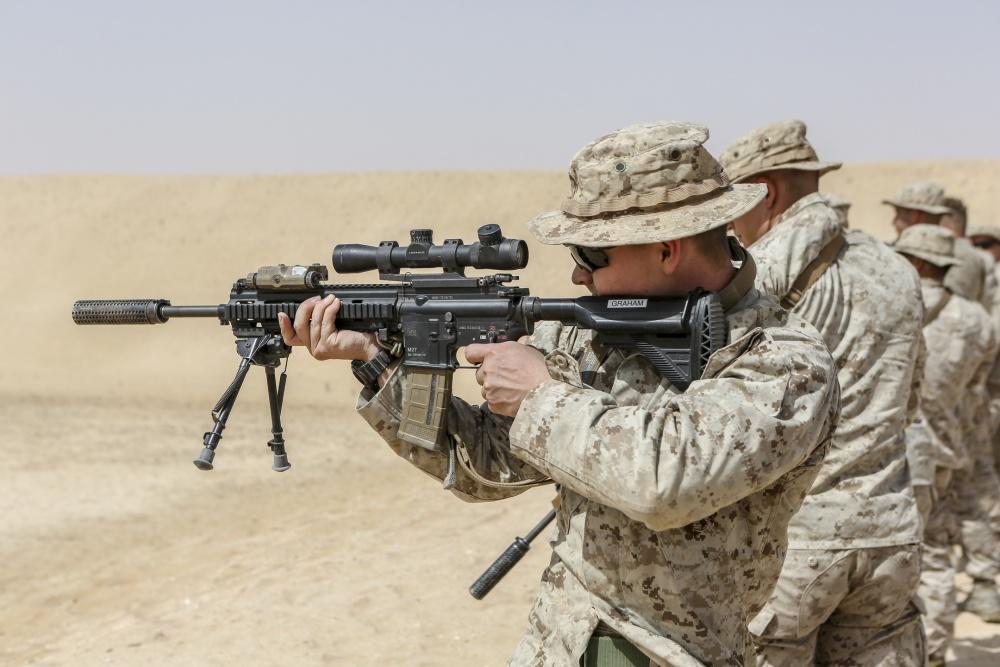
Today, the Navy’s frogmen teams continue the trend of running any number of tricked-out custom carbines with Noveske shorties topped with ATPIALs and AimPoint Micro T2s or EOTech XPS red dots recently making the news in an exercise.
This tracks with lots of very recent research on super short NFA Recce weapon builds using 12.5-inch barrels coupled with ballistics data at distance.
Shortcomings
A lot of guys can get lost in the sauce when it comes to a Recce Rifle concept, obsessing over ounces, inches, and precision — and swapping out glass, gear, handguards, stock, and BCGs every six months—in short, chasing an obsession with performance.
This can get expensive very quickly. While we usually say, “do what makes you happy so long as it doesn’t hurt anyone,” be aware of this personal glue trap that crops up probably more with this type of AR than any other.
Parting shots
With the proper setup, a good Recce may be the only AR you ever have to buy, replacing a personal plinker, budget range rifle, a better sporting rifle for the field, and a medium-to-long distance precision rifle, covering your bases with a single receiver providing you make good choices. That is all there is to it.
Updated
September 26, 2024 — We’ve updated this guide to focus both on existing Recce Rifles as well as how one might set up their own.
Sign up for our newsletter
Get discounts from top brands and our latest reviews!

